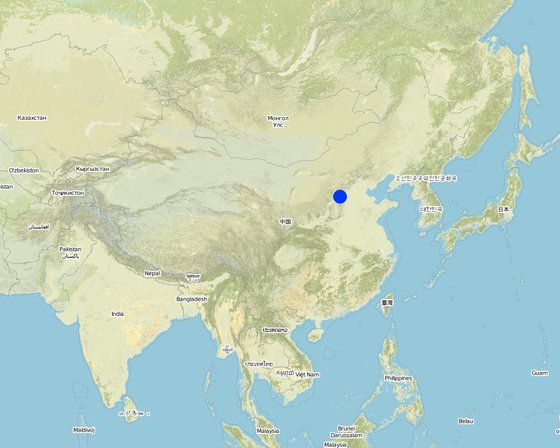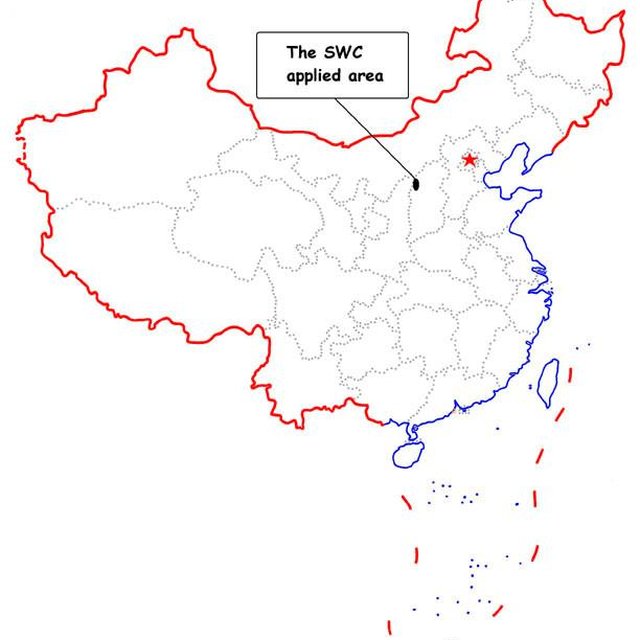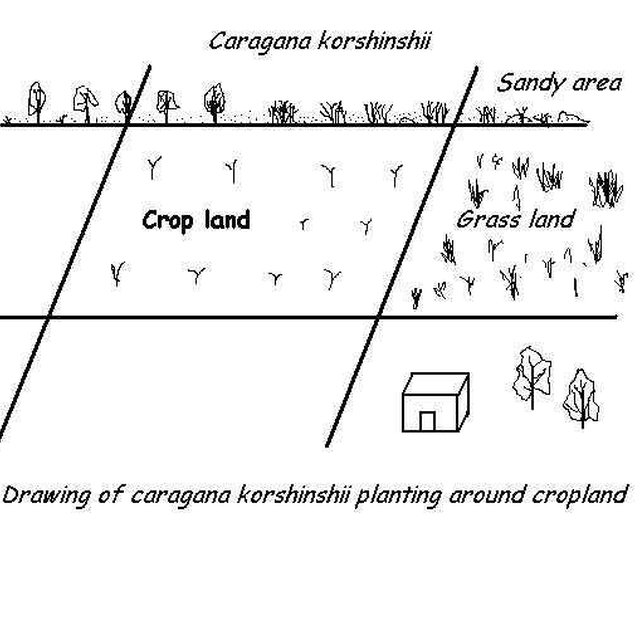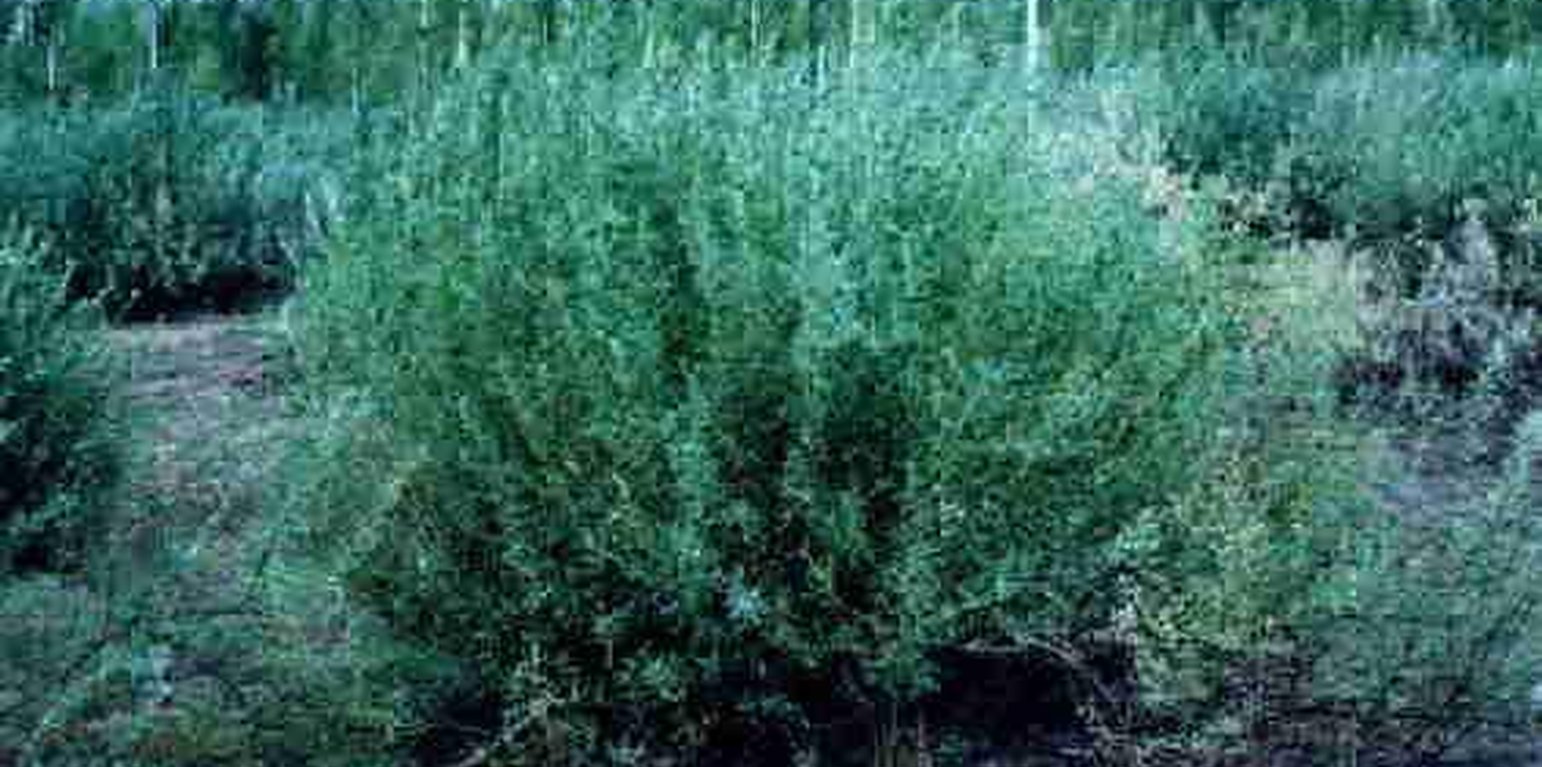Caragana Korshinskii Planting - a SWC vegetation technology
(China)
Descripción
SWC decision makers, I.e. approach planners, lead local people to plant caragana korshinskii in the areas of serious water and/or wind erosion by means of combined inputs from government, locals and social loan etc.
Aims / objectives: The most important factor that hinders agricultural development in the Loess Plateau is soil and water loss. Many measures have been taking to conserve soil and water resources. Here is one of them using caragana korshinskii as one kind of SWC vegetation approach.
Methods: With its long roots, caragana korshinskii can improve soil infiltration and extract water from deep soil layer. It can also protect soil from water and wind erosion because it is tightly fixed in the soil. It has rhizobium in its roots to improve soil fertility. Besides, its branch has economic value. To carry out this approach, planners lead local farmers to plant caragana korshinskii in the areas of the serious water and/or wind erosion. Before planting, dipping selected seeds in brine with 1% concentration, and then moving them in warm water for about 24 hours to make them easier germinating. Caragana korshinskii can be planted in holes. Autumn is the best season for seeding, but if there is much rain in Spring, it is also ok. In the first three years, young plants are very frail. They should be protected from sheep eating and cutting. After four years, the branches of caragana korshinskii above ground can be cut according to their utilization. The more you cut the better they grow.
Role of stakeholders: Besides government leaders, local land users are also the most important participants, they accomplish most of planting and maintaining work. The Research Institute is another key participant, they provide the SWC knowledge and technology.
Other important information: Caragana korshinskii has many other advantages besides ecological benefits. It has many economic values, such as supplying forage for sheep and fuel for local residents, supplying raw material for paper making, supplying green manure and improving soil quality. Finance is mainly from government, partially from loan and local input(labor).
Lugar

Lugar: Shanxi, China
Georreferencia de sitios seleccionados
Dato de inicio: 1960
Año de conclusión: n.d.
Tipo de Enfoque
-
tradicional/ local
-
iniciativa local reciente/ innovadora
-
proyecto/ basado en un programa

Area of the caragana korshinskii appication in the Loess Plateau.

Drawing of caragana korshinskii planting in the Loess Plateau.
Metas del Enfoque y entorno facilitador
Propósitos/ objetivos principales del Enfoque
The Approach focused mainly on SLM with other activities (Sheep forage, paper making, fuel, green manure etc.)
Controlling water and/or wind erosion, preventing sand and dust storm.
The SLM Approach addressed the following problems: Water and/or wind erosion, inadequate fodder, poor local agricultural and economic development.
Caragana korshinskii is one of the most drought endurable shrubs. Once planted, caragana korshinskii grows very fast.
Condiciones que facilitan la implementación de la/s Tecnología/s aplicadas bajo el Enfoque
Condiciones que impiden la implementación de la/s Tecnología/s aplicadas bajo el Enfoque
-
Normas y valores sociales/ culturales/ religiosos: People there seldom care about the environment
Treatment through the SLM Approach: Education, propagandizing
-
Disponibilidad/ acceso a recursos y servicios financieros : There is not enough money
Treatment through the SLM Approach: National subsidy, loan, collecting money from public
-
Marco de trabajo legal (tenencia de tierra, derechos de uso de tierra y agua): Lack of corresponding acts
Treatment through the SLM Approach: Enforcing legislation
The existing land ownership, land use rights / water rights hindered a little the approach implementation The state has ownership of the land resources, land users can only lease the land for a period of time, they worry about their land would be transferred to others.
-
Conocimiento de MST, acceso a apoyo técnico: inadequate
Treatment through the SLM Approach: Learn from SWC specialists, introduce into new acquainted person
Participación y roles de las partes interesadas involucradas
Partes interesadas involucradas en el Enfoque y sus roles
| ¿Qué partes interesadas/ entidades implementadoras estuvieron involucradas en el Enfoque? |
Especifique las partes interesadas |
Describa los roles de las partes interesadas |
| usuarios locales de tierras/ comunidades locales |
Working land users were work equally divided between men and women (including all the local land users and government politicians)
Existing groups of land users |
|
| gobierno nacional (planificadores, autoridades) |
|
|
Involucramiento de los usuarios locales de tierras/ comunidades locales en las distintas fases del Enfoque
ninguno
pasivo
apoyo externo
interactivo
auto-movilización
monitoreo y evaluación
measurements/observations;
Research
measurements/observations;
La toma de decisiones en la selección de Tecnología MST
Las decisiones fueron tomadas por
-
solamente usuarios de tierras (autoiniciativa)
-
principalmente usuarios de tierras con el apoyo de especialistas MST
-
todos los actores relevantes, como parte de un enfoque participativo
-
principalmente por especialistas MST en consulta con usuarios de tierras
-
solo por especialistas MST
-
por políticos/ líderes
La toma de decisiones se basa en
-
la evaluación de conocimiento MST bien documentado (la toma de decisiones se basa en evidencia)
-
hallazgos de investigaciones
-
la experiencia personal y opiniones (no documentadas)
Apoyo técnico, fortalecimiento institucional y gestión del conocimiento
Las siguientes actividades o servicios fueron parte del enfoque
-
Construcción de capacidades / capacitación
-
Servicio de asesoría
-
Fortalecimiento institucional (desarrollo institucional)
-
Monitoreo y evaluación
-
Investigación
Construcción de capacidades/ capacitación
Se proporcionó capacitación a las siguientes partes interesadas
-
usuarios de tierras
-
personal de campo/ consejeros
-
SWC specialists, extensionists/trainers, planners, politicians/decision makers
Forma de capacitación
-
en el contexto de trabajo
-
de agricultor a agricultor
-
áreas de demostración
-
reuniones públicas
-
cursos
Temas avanzados
seed, establishment and maintenance of Caragana korshinskii
Servicio de asesoría
Se proporcionó servicio de asesoría
-
en los campos de los usuarios de tierras
-
en centros permanentes
Visiting demonstration areas; Key elements: Quality of the demonstration, Ability of visitors, Ability of hierophants; 1) Advisory service was carried out through: projects own extension structure and agents, government's existing extension system 2) Advisory service was carried out through: projects own extension structure and agents, government's existing extension system; Extension staff: mainly government employees 3) Target groups for extension: land users, technicians/SWC specialists; Activities: farm visits
Advisory service is quite adequate to ensure the continuation of land conservation activities; Activities of government influence the choice of land users greatly, usually by administration ways.
Fortalecimiento institucional
Se fortalecieron/ establecieron instituciones
-
no
-
sí, un poco
-
sí, moderadamente
-
sí, mucho
Describa la institución, los roles y las responsabilidades, miembros, etc.
Tipo de apoyo
-
financiero
-
construcción de capacidades/ entrenamiento
-
equipo
Detalles adicionales
Monitoreo y evaluación
bio-physical aspects were regular monitored by 0 through measurements; indicators: None
technical aspects were ad hoc monitored by 0 through observations; indicators: None
economic / production aspects were regular monitored by 0 through measurements; indicators: None
management of Approach aspects were None monitored by 0 through observations; indicators: None
There were few changes in the Approach as a result of monitoring and evaluation: planting density, frequency of caragana korshinikii branch cutting.
Investigación
La investigación trató los siguientes temas
-
sociología
-
economía/ marketing
-
ecología
-
tecnología
comparing Caragana korshinskii with other kind of SWC vegetation species.
Research was carried out on station
Financiamiento y apoyo material externo
Presupuesto anual en dólares americanos para el componente MST
-
< 2,000
-
2,000-10,000
-
10,000-100,000
-
100,000-1,000,000
-
> 1,000,000
Precise annual budget: n.d.
Approach costs were met by the following donors: government (national - money, technology, planning): 25.0%; national non-government (money): 45.0%; local community / land user(s) (material, money, labor): 30.0%
Los siguientes servicios o incentivos fueron proporcionados a los usuarios de las tierras
-
Apoyo financiero/material proporcionado a los usuarios de tierras
-
Subsidios para insumos específicos
-
Crédito
-
Otros incentivos o instrumentos
Apoyo financiero/material proporcionado a los usuarios de tierras
parcialmente financiado
totalmente financiado
seedlings and biocides
biocides are fully financed
El trabajo de los usuarios de las tierras fue
-
voluntario?
-
comida por trabajo?
-
pagado en efectivo?
-
recompensado con otro tipo de apoyo material?
Crédito
-
Condiciones: Interest rate charged: 0.7%
Interest was lower than market rate.
-
Proveedores de crédito: n.d.
-
Destinatarios del crédito: n.d.
Análisis de impacto y comentarios de conclusión
Impactos del Enfoque
No
Sí, un poco
Sí, moderadamente
Sí, mucho
¿El Enfoque ayudó a los usuarios de tierras a implementar y mantener Tecnologías MST?
They protect their cropland by applying vegetative measures such as planting caragana koshinskii around the land so that both increasing crop yield and additional income by feeding more sheep etc.
¿El Enfoque mejoró cuestiones de tenencia de tierra/ derechos de usuarios que obstaculizaron la implementación de la Tecnologías MST?
The approach could very little on it.
The problem is likely to be overcome in the near future. By signing land use contract with land ownership.
Did other land users / projects adopt the Approach?
As one kind of vegetation method, it can be used with other approaches, such as check dam.
Motivación principal del usuario de la tierra para implementar MST
Sostenibilidad de las actividades del Enfoque
¿Pueden los usuarios de tierras sostener lo que se implementó mediante el Enfoque (sin apoyo externo)?
Conclusiones y lecciones aprendidas
Fortalezas: perspectiva del usuario de tierras
-
Obtaining additional economic return (How to sustain/ enhance this strength: Developing Stockbreeding and increasing crop yield.)
-
low input and easy to implementing (How to sustain/ enhance this strength: Forbidding overgrazing and cutting.)
Fortalezas: punto de vista del compilador o de otra persona recurso clave
-
Reducing wind and water erosion (How to sustain/ enhance this strength: Scientific design and management.)
-
simple SWC and easy to carry out (How to sustain/ enhance this strength: Enhancing training of how to scientifically planting caragana korshinskii.)
-
marked economic benefits that farmers would like to do (How to sustain/ enhance this strength: Further developing the variable uses of caragana korshinskii.)
-
Preventing sand and dust storm in the leeward region. (How to sustain/ enhance this strength: Enlarging planting areas and combining with other SWC measures.)
Debilidades/ desventajas/ riesgos: perspectiva del usuario de tierrascómo sobreponerse
Debilidades/ desventajas/ riesgos: punto de vista del compilador o de otra persona recurso clavecómo sobreponerse
Referencias
Fecha de la implementación: 28 de enero de 2009
Últimas actualización: 9 de julio de 2017
Personas de referencia
-
Jinsheng FU (baoyuan+changeme3@bnu.edu.cn) - Especialista MST
-
Mingshu Xie - Especialista MST
Descripción completa en la base de datos de WOCAT
La documentación fue facilitada por
Institución
- Department of Resources and Environmental Science, Beijing Normal University (Department of Resources and Environmental Science, Beijing Normal University) - China
Proyecto
Referencias claves
-
Yang Wenbin, Ren Jianmin, Jia Cuiping. Studies of The Relationship Between Physiological Ecology of Drought-Resist in Caragana Korshinskii and Soil Water. Acta Ecologica Sinica. 1997,17(3): 239-244.: Library of Department of Resources and Environment, BNU.
-
Hu Xuewen. Marked benefits of developing Caragana korshinskii in Pianguan county. Economic benefits corpus of soil and water conservation. 1987.10: 43-44.: Library of Department of Resources and Environment, BNU.
-
Li Zhirong. To advocate for Caragana korshinskii. Economic benefits corpus of soil and water conservation. 1987.10: 36-38.: Library of Department of Resources and Environment, BNU.
-
Zhao Zhizhong. Planting Caragana korshinskii extensively, breeding livestock to reach richness. Soil and Water Conservation Science and Technology in Shanxi. 1997.3: 26-28.: Library of Department of Resources and Environment, BNU.
-
Niu Xiwu. The distribution and description of Caragana Fabr. In China. Acta Bot. Boreal. Accident Sin. 1999,19(5): 107-133.: Library of Department of Resources and Environment, BNU.
-
Pan Ming, Zhao Jinrong. Benefits of Caragana korshinskii and its planting technology. Economic benefits corpus of soil and water conservation. 1987.10:39-42.: Library of Department of Resources and Environment, BNU.
-
Cheng Jimin. The Reasonable Utilization and Patterns of the Main Shrub Species In Southern Ningxia Hui Autonomous Region. Bulletin of Soil and Water Conservation. 1991,11(1): 54-61.: Library of Department of Resources and Environment, BNU.
-
Li Jinchuan, Wang Wenying, Lu Chongen. Exploration on Restoring Vegetations of Dump Land on An-Tai-Bao Surface Mine. Henan Science. 1999,17(Suppl.): 92-95.: Library of Department of Resources and Environment, BNU.
-
Bai Yongqiang. Studies on Phonological Patterns of the Main Shrubs in Yanchi Sandy Land. Journal of Arid land Resources and Environment. 1998,12(2): 82-86.: Library of Department of Resources and Environment, BNU.






